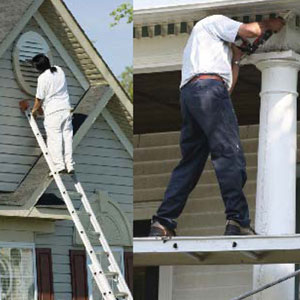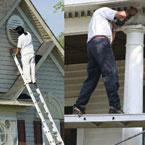 WASHINGTON – Reformation of the EPA’s Lead Renovation, Repair and Painting (LRRP) Rule continues to move forward with the introduction of the bipartisan Lead Exposure Reduction Amendments Act of 2012.
WASHINGTON – Reformation of the EPA’s Lead Renovation, Repair and Painting (LRRP) Rule continues to move forward with the introduction of the bipartisan Lead Exposure Reduction Amendments Act of 2012.
Introduced by Reps. John Sullivan (R-OK), Tim Murphy (R-PA) and nine cosponsors, H.R. 5911 “would restore the ‘opt-out’ clause, suspend the LRRP if EPA cannot approve a commercially available test kit meeting the regulation's requirements, prohibit expansion of the rule to commercial buildings until EPA conducts a study demonstrating the need for such action and provide a de minimis exemption for first-time paperwork violations.”
Debate has been strong over EPA’s LRRP Rule, which took effect in April 2010. Currently, renovation work that disturbs more than 6 square feet on the interior of a pre-1978 home and all window and door replacement must adhere to “rigorous and costly work practices” which are supervised by an EPA-certified renovator and performed by an EPA-certified renovation firm.
Further contention came from the removal of the "opt-out provision" in July 2010, which would have enabled homeowners without children under six or pregnant women residing in the home to allow their contractor to forego the requirements. By removing the opt-out provision, industry groups contend EPA has “more than doubled the number of homes subject to the LRRP Rule,” adding more than $336 million per year in compliance costs.
In addition, LRRP’s detractors point to EPA’s “failure” to approve compliant test kits.
H.R. 5911 has received support from industry associations, including the Window and Door Manufacturers Assn. and the National Lumber and Building Material Distributors Assn.
"Since the EPA Lead Rule took effect in April 2010, EPA has expanded the rule beyond its original goal of protecting pregnant women and small children while mismanaging the implementation of the rule and failing to meet its own requirements to produce an accurate test kit," WDMA President Michael O'Brien said in a statement. "The Sullivan-Murphy bill is a common-sense response which will refocus efforts on protecting pregnant woman and small children and we applaud Congressmen Sullivan and Murphy for their leadership on this issue."
"The NLBMDA and our members have worked tirelessly to reform the misguided EPA lead rule, and the introduction of legislation in the House of Representatives shows that our industry concerns are being heard on Capitol Hill," NLBMDA Chair Cally Fromme, executive vice president of Zarsky Lumber Co., said in a statement. "We commend Congressmen Sullivan and Murphy and appreciate their leadership on this issue. We will make passage of this bill a top priority."
The House legislation follows on the heels of Senate bill S.2148, introduced in March by Sen. James Inhofe (R-OK) and five co-sponsors. Like the House bill, S. 2148 — Lead Exposure Reduction Amendments Act of 2012, would reinstate the opt-out provision and also provide an exemption for emergency renovations. Eliminated too would be the requirement for hands-on recertification training. S.2148 received support from industry groups including the National Association of Home Builders.
"We applaud Sen. Inhofe and his colleagues for sponsoring this bill to make much-needed improvements to EPA's lead paint rule during this busy time in Congress," 2012 NAHB Remodelers Chairman George Moore Jr., GMB, CAPS, GMR, said in an earlier statement. "If this effort is successful, it will reduce the regulatory burden for remodelers facing costly penalties for first-time violations like misfiled paperwork and allow home owners to make the final decision about renovations in their homes."






Have something to say? Share your thoughts with us in the comments below.